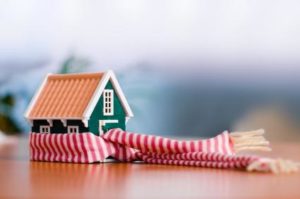Depending on where you live, winters can range from chilly to arctic. And depending on the age of your home, your winter contentment level can range from comfortable to teeth-chattering. Older homes come with a well-documented litany of money-losing, energy-sucking, cold-inducing problems, including unsealed air gaps, not enough insulation, and leaky windows. Owning a newly built home means warmer feet – and lower utility bills.
One of the reasons that newer homes are more comfortable in the winter is that they are generally more energy-efficient. Building codes have mandated increasingly higher energy efficiency standards since the late 1970s, says Kevin Morrow, senior program manager for the National Association of Home Builders’ green building programs. “The most recent International Energy Conservation Code came out in 2009 [and] required roughly 17 percent more efficiency than the codes of three years prior,” he says. “So using that as sort of a gauge to how newer homes should perform from an efficiency standpoint compared to older homes, it’s pretty clear that just as homes meet code, they are going to be more efficient.”
Air Sealing
New homes use energy more efficiently. They have a tighter-sealed building envelope that helps prevent conditioned air — cool air in the summer, warm air in the winter — from escaping. Features that create this envelope include higher-efficiency insulation, doors and windows.
Windows and Doors
Windows and doors provide homes with light, warmth, and ventilation. And energy-efficient windows and doors can help lower a home’s heating, cooling and lighting costs. Window efficiency has increased tremendously as glass technologies have become very sophisticated, integrating low-e glazing and low conductivity gases. New exterior doors fit and insulate better than older ones, meaning that less air is lost through leakage.
Attic and Wall Insulation
The greater the difference between the indoor and the outdoor temperatures, the more energy it takes to maintain a comfortable temperature in your home. Adding insulation between the indoors and the outdoors reduces that energy demand. Newly built homes are packed with insulation, so they are more energy efficient and more comfortable than older homes.
Green Appliances
Heating and cooling accounts for more than half of the energy use in a typical U.S. home, making it the largest energy expense for most homes. More energy-efficient mechanics help reduce utility bills. Newly-constructed homes include high efficiency water heaters, furnaces and air conditioning units that homes built years ago might not. If you live in a cold climate, a high efficiency furnace will rival or exceed air sealing for its potential money and energy savings. In warmer areas, a high efficiency heat pump is the best choice.
Programmable Thermostats
Just like a water heater that maintains a set temperature even when it isn’t being used, a thermostat does the same thing for the entire house. Using a programmable thermostat allows you to adjust the times you turn on the heating or air-conditioning according to your schedule. By letting the house warm up (or cool off) when there isn’t anyone awake or at home, you save energy and money.
Myers Barnes is America’s favorite new home sales trainer, author, speaker and consultant. For more information, please visit www.myersbarnes.com.



